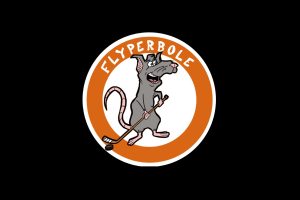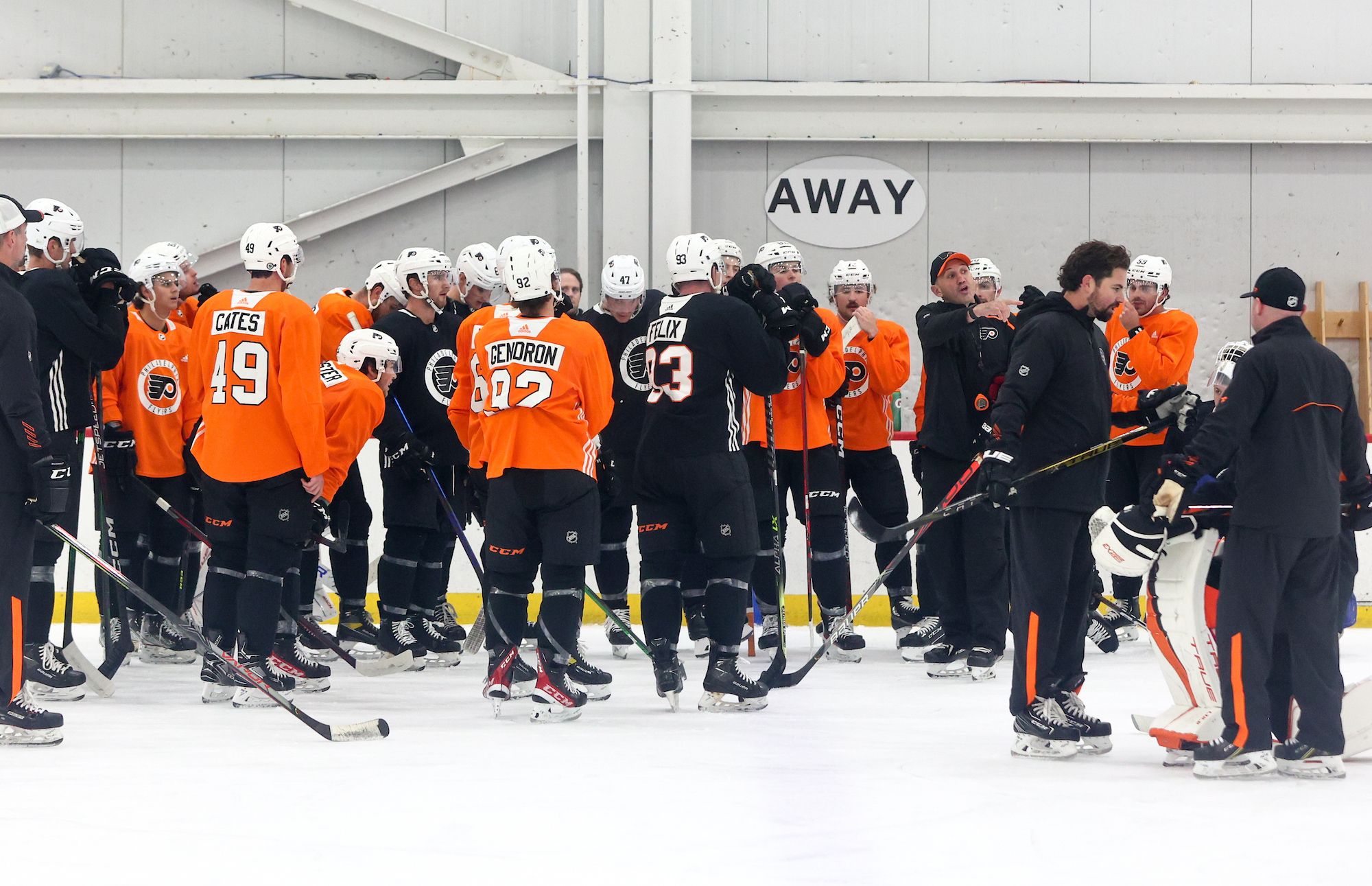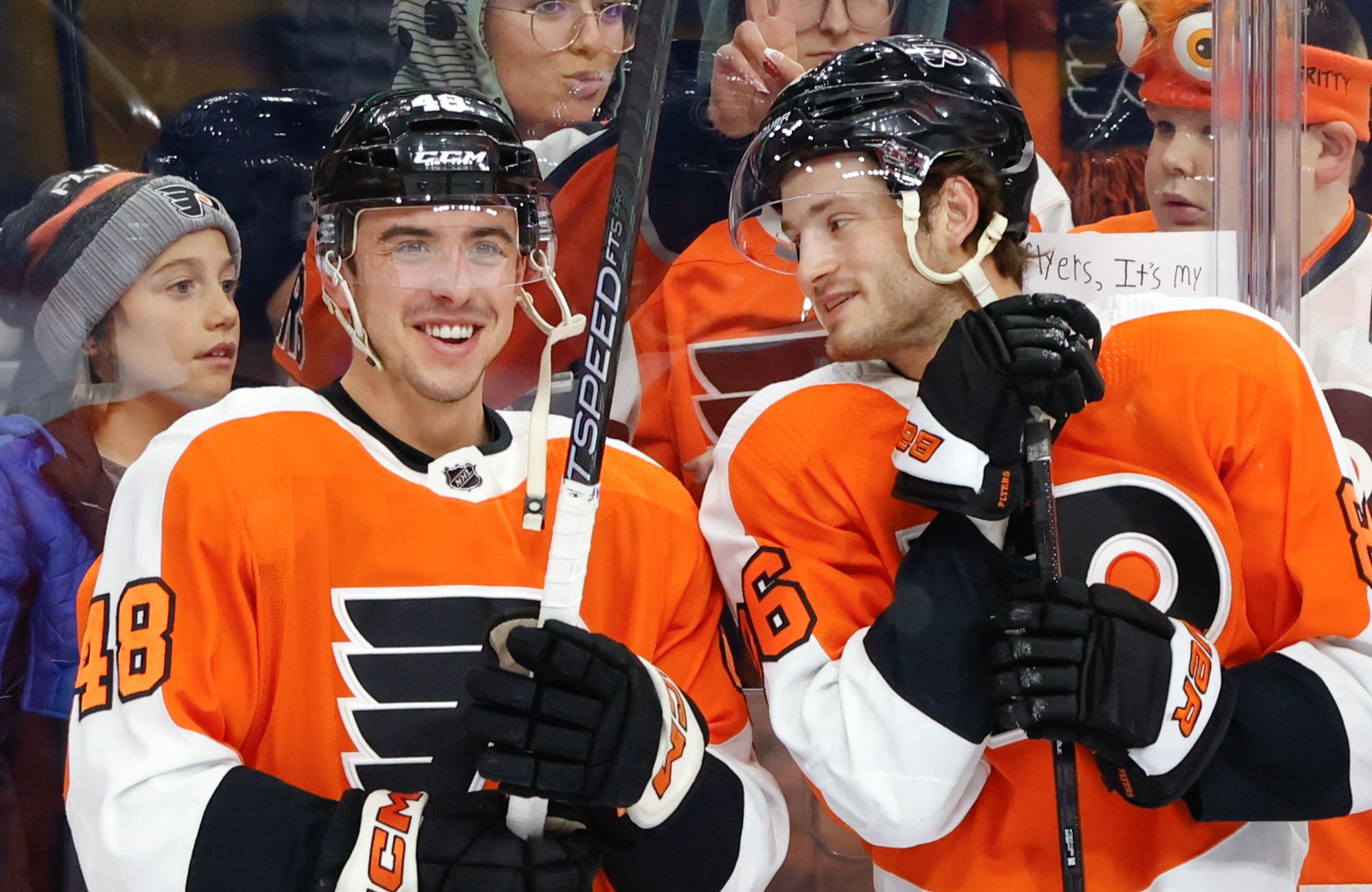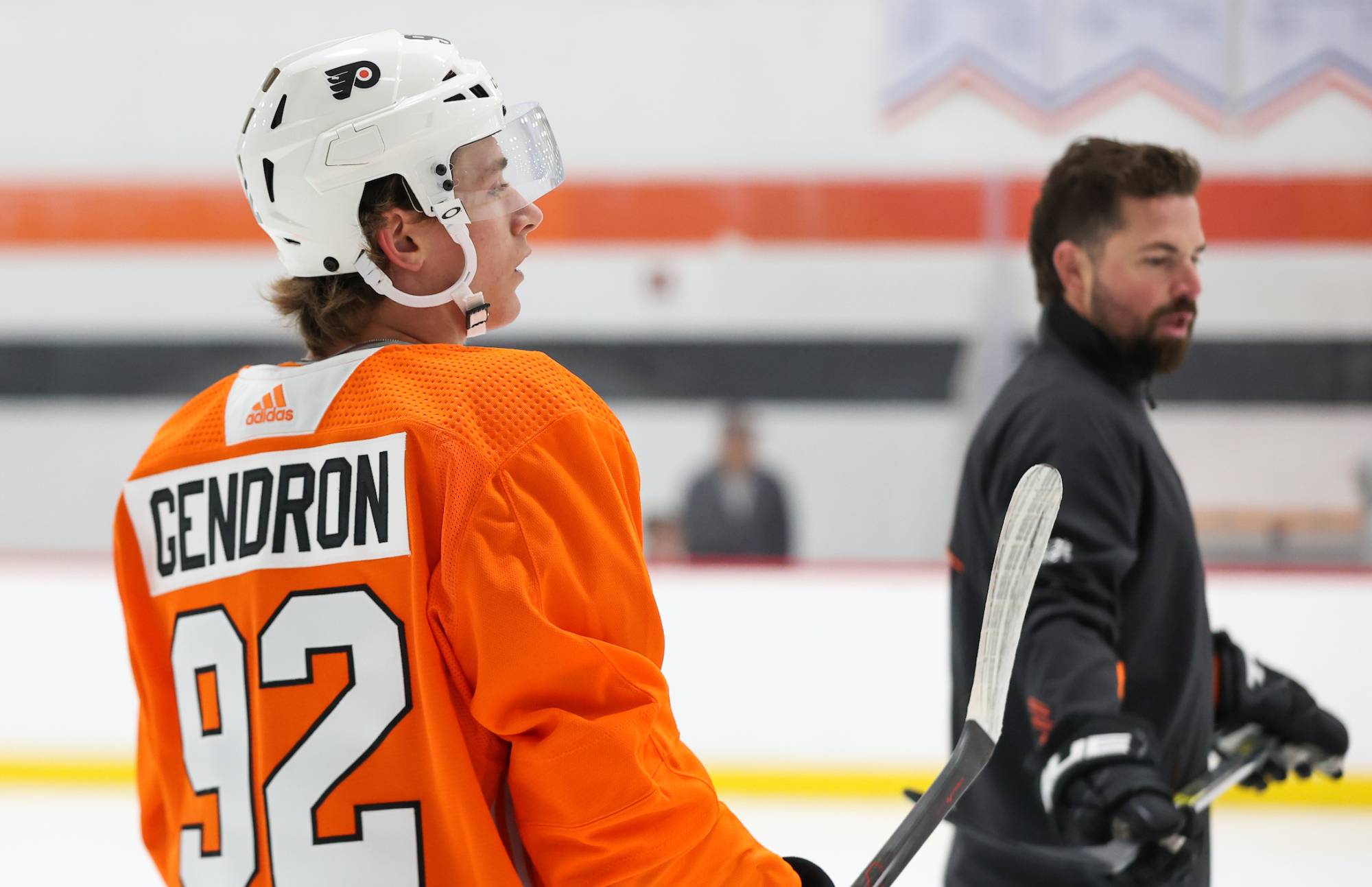Morning Observations is a feature where we break down the previous night’s game with an analytical eye.
#1: The negative narratives surrounding PHI were accurate on this night
It’s not surprising that during such a frustrating Flyers season, narratives have taken hold in the fanbase to help explain the poor year that may contain grains of truth, but aren’t fully accurate. Here’s a quick rundown of some of the more popular ones:
- The Flyers are boring
- Giroux is finished
- Couturier is useless
- The power play is bad/
That’s not to say there aren’t fair points within these beliefs. The team has struggled in regularly generating high-skill plays; Giroux hasn’t met preseason expectations; Couturier is not scoring like he did last year when he was one of the NHL’s better 2Cs; the power play has gone through extended droughts. But in reality, the narratives are mostly unfair and incomplete. Had this been the first game of the Flyers season that a fan was able to watch on television, however, those bullet points would sure seem spot-on.
Against a poor Winnipeg club, the Flyers could muster just 26 shots on goal and 45 total attempts and rarely even attempted creative offensive plays. Couturier not only did not score — his line was destroyed territorially at 5v5. By the third period, Giroux was flailing around the ice on the PP and at even strength with emotion, but without any obvious sense of purpose. And speaking of the power play, it failed on all three opportunities and generally looked ugly in the process.
In terms of the furthering of these narratives, this game was an anomaly, especially compared to recent weeks. Giroux’s play has noticeably taking a turn for the better over the past month, and he’s even scoring points again (two tonight). Couturier’s line had delivered a number of monster games. The Flyers still take too many point shots, but over the past couple months, there has been a conscious effort to attack the slot more, as show in rising xG For rates. And no power play unit in the NHL has been a better shot creation unit than Philadelphia’s PP1 this year. Still, I’m sure there’s a fair amount of “I told you so’s” on social media this morning after that clunker.
#2: Flyers did not pressure an awful Jets defense enough
The Jets essentially iced a blueline corps with two capable players (Dustin Byfuglien and Josh Morrissey) and then lots of slop, whether it was untested players like Julian Melchiori and Nelson Nogier or guys with awful NHL track records like Brian Strait and Mark Stuart. This was a back-end that the Flyers should have been able to exploit, which they showed on the Jordan Weal goal, with Wayne Simmonds taking up uncontested residence behind the Jets’ net and waiting for a passing lane to open up. Those types of defensive zone follies should have been commonplace last night, but instead, the Flyers could barely even get the puck into the zone to start putting pressure on Winnipeg’s defense.
Through a little over 40 minutes at 5v5, Philadelphia generated 31 shot attempts and less than one Expected Goal (0.87). That’s not just bad, it’s embarrassing, especially considering the quality of defense that they were facing. Credit the Jets forwards for being aggressive in the neutral zone to protect their weakness from being exposed, but there’s no reason why the Flyers shouldn’t have been able to put together a number of extended cycles, wearing down a limited Jets blueline. Instead, there were one-and-done far too often, settling for point shots most of the time they actually did get set up. The result was fruitless, nonthreatening offensive zone entries, and no actual pressure being placed on Winnipeg’s biggest weakness.
NHL.com Report & Highlights | Corsica.Hockey Game Recap Page | HockeyStats.ca Recap | NaturalStatTrick Recap | HockeyViz.com | BSH Recap | Meltzer’s Musings
#3: Inconsistency the biggest recent problem
Over the past four games, the Flyers have two losses and two wins — obviously not nearly good enough to make a miracle push back into playoff contention, but not a portrait of a team in free fall. However, it seems like when the Flyers lose, they do so in especially embarrassing fashion, which is the heart of the problem. This is a team that can go out and dominate the Penguins both on the scoreboard and the stat sheet, and then one night later, get bulldozed by an atrocious Devils club. They kicked off this week by thoroughly outplaying the Hurricanes and finally getting their deserved victory in overtime; then they follow that up with a stinker in Winnipeg against a beatable club.
Is the problem effort or “heart,” as Sam Carchidi put it after the game? I have my doubts. Last night, I watched a team that couldn’t complete a simple pass up the ice, and no amount of heart is going to help passing accuracy. In the end, I think back to an article that Kurt wrote earlier this year, arguing that — aside from the power play — the Flyers lacked a standout aspect of their game that could carry them when other parts go cold. Well, now that the power play has gone cold too, the Flyers really don’t have anything they can count on. The result is that they lack a stabilizing element to their game, a knowledge that if things go really bad, “we can count on the goalies” or “if we draw a penalty, we can turn this game around.” As a result, poor play tends to snowball and the team can’t seem to shake off their malaise of poor execution once it appears.
#4: Horrific offensive first period
The opening stanza was actually the Flyers’ best in terms of raw territorial play (a 42.2% score-adjusted Corsi just barely edged out the results from the 2nd and 3rd), but it was also a completely toothless offensive period. They generated seven shots on goal, but only three actual scoring chances, while the Jets were able to create ten. Philadelphia fell back hard into their bad offensive zone habits, settling for low-percentage point shots on almost every occasion. The heat map chart for the period was laughable in terms of the Flyers’ shot locations and how likely they were to create goals.
These are also not the spots where you want to be shooting from. pic.twitter.com/jKgaSKhb4m
— Charlie O’Connor (@BSH_Charlie) March 22, 2017
Over the final two periods, Philadelphia did generate the occasional scoring chance. But against a goalie (Michael Hutchinson) who hadn’t started a game in two months, it would have been nice to see them actually test him early, especially since Hutchinson’s puck handling was a mess in that opening period. Instead, they gave him lots of perimeter shots, and probably allowed him to play his way into the game.
#5: PK gives up another one
The Flyers’ penalty kill truly amuses me at this point. For long stretches within games, they actually look fairly competent, stopping teams from moving the puck through the neutral zone against them and blocking shots before they can get to dangerous areas. But over the past month, it’s been inevitable that at some point, there will be a breakdown, and that breakdown will result in a goal against. On this night, it was an extended shift for the Couturier-Read duo, followed by a picture-perfect deflection of a point shot that tied the score.
Truthfully, the biggest problem last night was a lack of discipline, not PK ineptitude, as killing five-out-of-six penalties really isn’t an awful rate (and is above PHI’s season average). Even a mediocre power play like Winnipeg’s is probably going to score at least once on that many chances. Still, considering their current status as one of the biggest whipping boys, a clean sheet from the shorthanded units would have been nice to see.
#6: Sad truth is that there’s dead weight on two pairs
If you’re looking to point fingers as to why the Flyers were butchered from a play-driving standpoint last night at 5v5, go no further than the results of the three defense pairings. The Michael Del Zotto-Radko Gudas duo was again fine, with both players finishing above 50%. The Schultz/Gostisbehere and Provorov/MacDonald pairs, on the other hand, were not so lucky. The former hovered around 38%, while the “top” duo couldn’t even crack 25%.
It’s especially frustrating because Provorov and Gostisbehere are clearly the two most dynamic players on the blueline, and the ones most capable of changing a game in one play. But both are saddled with veterans who have driven down their play all year long. Ghost had a 48.9% Corsi For with Schultz entering last night’s game and was at 54.2% without; Provorov was 46.4% with and 52.8% without MacDonald. It’s amazing to think that the Flyers still want to believe that they can make the playoffs while basically strapping a ball and chain to their two most talented blueliners.
#7: Top line had its moments
The only forward trio that showed any signs of life was the top line of Wayne Simmonds, Claude Giroux and Jordan Weal. For the first two periods, they were the only “scoring” line capable of creating anything offensively, as the Filppula and Couturier lines floundered. Eventually, they were rewarded with a goal, the result of a slick rush execution from Giroux, expert patience from Simmonds, and Weal showcasing his willingness to park in front of the net despite his diminutive size. That wasn’t a fluky goal that gave the Flyers the early lead — it was the type of high-skill tally that has occurred far too infrequently this season.
But once the third period rolled around, the Giroux line collapsed in terms of effectiveness. After posting solidly positive play-driving metrics over the first 40 minutes, the top line cratered late, and all three of Weal, Simmonds and Giroux finished with sub-50% score-adjusted Corsi ratings for the game. Their struggles late were clear via the eye test, with Giroux receiving the bulk of the vitriol online for some ugly turnovers and especially poor routes through the neutral zone. They were still better than the second and third lines on the whole, but the poor close put a damper upon their game.
#8: Bellemare line drove play, surprisingly not rewarded
I’ve come to expect that if the line centered by Pierre-Edouard Bellemare has a few strong shifts early in a game, they’ll be getting a not-insignificant number of 5v5 minutes the rest of the way. Head coach Dave Hakstol clearly has a soft spot for the line, and he often seems to be looking for an excuse to use them more. That’s why I was surprised to see the VandeVelde-Bellemare-Read trio have a few very strong shifts (all finished with score-adjusted Corsi rates over 74%) yet still be stapled to the bench. None of the forwards received more than seven minutes of ice time at 5v5, and even with PK time added to the mix, they were all near the bottom of the charts. Not that I think Hakstol should have given the fourth line a longer look, but it was just surprising to see the coach stick with the struggling second and third lines considering his obvious respect for Bellemare’s unit.
#9: Couturier line a big disappointment
While the Giroux line at least drove play for extended stretches, the trio of Sean Couturier, Brayden Schenn and Dale Weise struggled from the opening puck drop. They didn’t even have the excuse of primarily matching up with the Jets’ top players — instead, they mostly faced the Morrissey-Strait pairing (hardly world-beaters) and battled the Winnipeg third line more than any other. Despite the relatively cushy usage, they were torched to the tune of a sub-30% score-adjusted Corsi and xG rates in the single digits. It’s especially disappointing because Couturier’s line has delivered so many good games in recent weeks, with Sunday’s win over Carolina just one of those instances. Last night, however, they were a disaster.
#10: Giroux fell apart in third
Claude Giroux was absolutely destroyed on social media following the game, first for a perceived poor showing in the game, and then for a “We’re a better team than what happened tonight” comment. The latter is just the usual social media madness — for starters, Giroux obviously isn’t going to throw his team under the bus and say that the roster is terrible, and second, his comment was objectively true. The fans’ issues with Giroux’s play in the game, however, warrant serious scrutiny. He did finish with two assists (both secondary), and the first one at the very least was well-earned. But he sure looked ugly over the final twenty minutes of play, particularly on the power play, where he turned the puck over multiple times and was outmuscled by Jets PKers in his usual spot.
I don’t think it’s fair to call his entire game a disaster. For two periods, his line was the only Flyers unit that could create anything, and Giroux wasn’t a passive observer there. But that doesn’t absolve him for a horrific third period with the game’s outcome still in doubt. The one argument that is unfair, in my opinion, is that Giroux stopped trying. Jumping into a scrum in that third period to back up Radko Gudas (who surely didn’t need help) doesn’t paint the picture of a player who stopped caring. The execution was off, sure. But as I’ve said on multiple occasions, it’s just plain inaccurate to ascribe poor effort to the Flyers’ captain.









